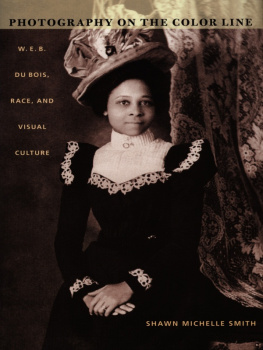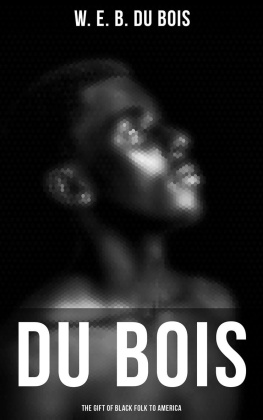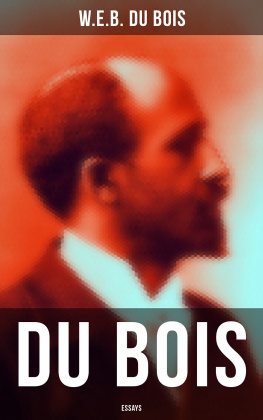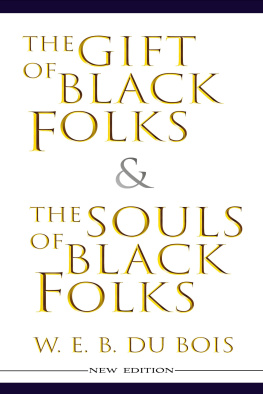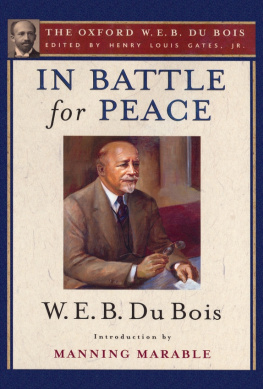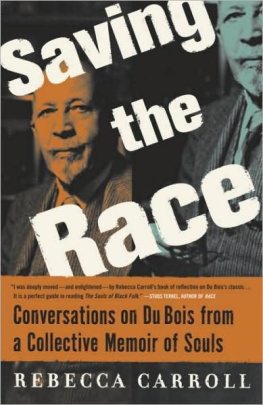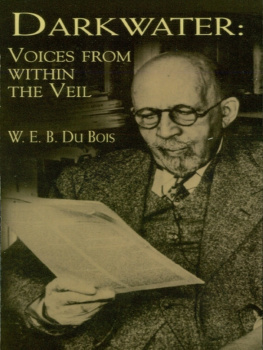Acknowledgments
It is a great pleasure to formally thank the many people and institutions that have supported the production of this book. Generous funding for research and writing was provided by a Visiting Research Fellowship at the Center for the Humanities, Oregon State University, an Irene Diamond Foundation Fellowship at the Schomburg Center for Research in Black Culture, and a Visiting Research Fellowship at the Obert C. and Grace A. Tanner Humanities Center, University of Utah. The directors and staff at each of these institutions helped make these years particularly productive and enjoyable, and I would like to acknowledge Peter Copek, Wendy Madar, Howard Dodson, Diana Lachatanere, Dian Alleyne, Peter Hobbs, Gene Fitzgerald, Holly Campbell, Lindsey Law, Emily Heward, and Richard Tuttle. Colleagues I met at each of these places enriched my thinking as this project developed, and Id like to thank especially Colin Palmer, Carolyn Adenaike, Ivor Miller, Lydia Lindsey, Kim Lau, Janet Theiss, Marouf Hasian, Ed Rubin, Katie Pearce-Sassen, Ryan Spellecy, Crystal Parikh, Brian Locke, Gillian Brown, and Vince Cheng. Kathryne Lindberg was a particularly engaging and rigorous interlocutor, and she, along with Martha Biondi and Shannon Miller, made periods of hard work fun.
Mary Ison, Barbara Natanson, and Jan Grenci in the Prints and Photographs Division at the Library of Congress were very helpful over the course of many years, and I am especially indebted to Jan for first introducing me to the W. E. B. Du Bois collections and for later spending several afternoons working through the albums with me. Mary Yearwood and Sharon Howard at the Schomburg Center for Research in Black Culture shared their expertise and aided me in situating the Georgia Negro photographs within a broader historical context. I would also like to thank Karen Jefferson at the Archives Department of the Robert W. Woodruff Library, Atlanta University Center, the staff of the Atlanta History Center Archives, and that of the Auburn Avenue Research Center.
Several people gave me opportunities to present portions of this work to stimulating audiences whose questions helped refine my argument, and in this context Id like to acknowledge especially Wilfred Samuels, Richard Stein, and the graduate students of Northwest Passages, an American Studies research group at the University of Washington. Some of my initial thoughts along these lines were first developed in the article Looking at Ones Self through the Eyes of Others: W. E. B. Du Boiss Photographs for the 1900 Paris Exposition, African American Review 34, 4 (winter 2000): 58199, reprinted in The Souls of Black Folk: One Hundred Years Later , edited by Dolan Hubbard (Columbia: University of Missouri Press, 2003), 189217. I thank both publishers for permission to rework that material here.
Most of the research and writing for this book was undertaken while I was a faculty member at Washington State University, and I am grateful to Sue McLeod and Victor Villanueva, chairs of the Department of English during my tenure, for enabling me to take research leaves in order to develop this project. I would also like to thank my colleagues, especially Alex Hammond, Joan Burbick, Carol Siegel, and Nol Sturgeon, for making my work at WSU so enriching. Two College of Liberal Arts Initiation and Completion Grants, an Arts and Humanities Travel Grant, and funds from the Department of English and the Graduate School at WSU , helped me to purchase negatives and prints during my initial research, and I am especially grateful to Karen DePauw for her support. I completed the final stages of this work as a member of the Department of American Studies at Saint Louis University, and I would like to thank my current chair, Matt Mancini, and dean Mike May for their extraordinarily generous help in securing funds for final reproduction of the images. I am grateful for support from a Mellon Faculty Development Grant, the College of Arts and Sciences, and the Department of American Studies at Saint Louis University. My research assistants, Angie Dietz and Nancy Thompson, were a great help in securing images, proofreading, and preparing the index. As the manuscript was entering the final stages of production, I had the pleasure of coteaching a graduate seminar on W. E. B. Du Bois and race with my colleague Jonathan Smith, and I hope this book will resonate with some of the richness of that conversation.
I sincerely appreciate the long-standing support of Michael Davidson and Wai Chee Dimock, and I am truly indebted to them for responding to many calls for help over the years. I also continue to benefit from the insights Roddey Reid, Nicole Tonkovich, Phel Steinmetz, and Stephanie McCurry offered early on in my thinking. The friends and colleagues I have turned to most often for intellectual camaraderie, creative inspiration, and just for the fun of it, include Shelli Fowler, T. V. Reed, Wendy Walters, Ralph Rodriguez, Loren Glass, Amy Mooney, Geof Bradfield, Joseph Heathcott, Ashley Cruce, Jo Nutter, Marsanne Brammer, Elise Hanley, and Krista Lydia Roybal. Beth Freeman is that rare combination of good friend and rigorous critic, and my work has benefited considerably from her influence.
Deborah Williss encouragement has meant a very great deal to me, and her foundational work in the history of African American photography is a constant source of inspiration. Writing this book has also brought me into new and renewed conversation with many people working on photography, race, and visual culture, and for their insights, and the example of their scholarship, I would like to thank Sally Stein, Maren Stange, Alan Trachtenberg, Lisa Bloom, Elizabeth Abel, Jeannene Przyblyski, Eric Breitbart, Lisa Gail Collins, and Leigh Raiford. My admiration for the work of Laura Wexler and Priscilla Wald, and my deep appreciation for the kindness of their support and the rigor of their intellectual challenge, is boundless.
Ken Wissoker has been a wonderful editor, guiding me carefully through revisions and the nervous final stages, and I am especially indebted to him for imagining a book that aims to do justice to the remarkable photographs at its center. I would also like to thank Kate Lothman and Petra Dreiser for their diligent help in fine-tuning the manuscript.
I am profoundly grateful to my parents, Sandy and Jay Smith, for their enthusiastic and steadfast support, and for their continual reminders of the many pleasures of visual culture. Shannon Smith and Derek Hutchinson have cheered this work on along its way, and I would like to thank them especially for letting me share in their own very thrilling project, that of Haley Smith Hutchinson. Finally, this book keenly registers Joe Mascos thoughtful engagement throughout, and I am most grateful to him for keeping it under his close and constant care.
INTRODUCTION


